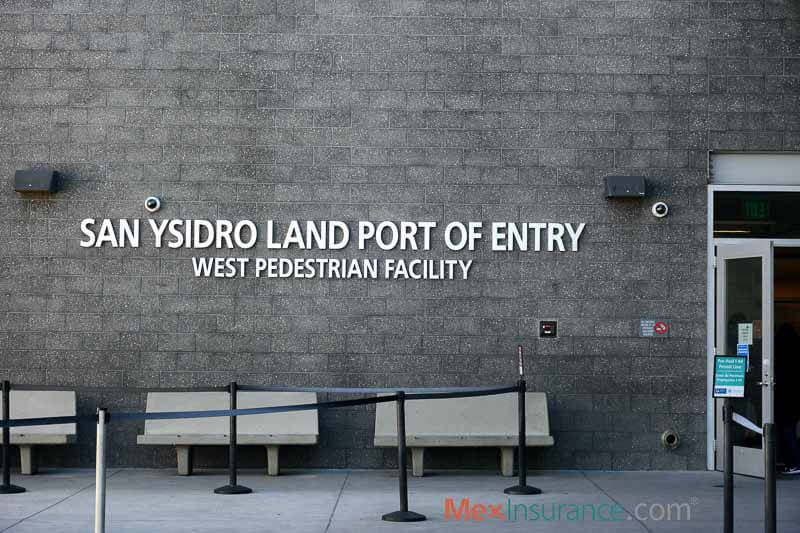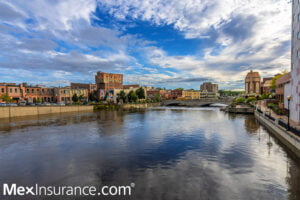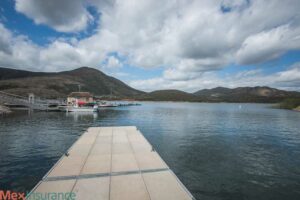Thu, 14 Nov 2019 17:51:24 +0000
Today, San Ysidro is a 28,000 suburb of the city of San Diego. Located on the US-Mexico border, San Ysidro is the busiest land crossing in the Western Hemisphere. However, this wasn’t always the case. San Ysidro was once an independent town and wasn’t even located on an international border. Read below for the history of San Ysidro changing from small community to the bridge that links two worlds.

Foundation and early history
In 1829, the First Mexican Republic granted 10,000 acres to Santiago Argüello Moraga, who founded the Rancho Tia Juana in the area that today is part of San Ysidro and Tijuana. In 1833, his son, Emilio Argüello, built an adobe house called “La Punta” that became the first and only structure in the area until the late 1800s.
After the US annexed California at the end of the Mexican-American War, what today is San Ysidro became a border area. In 1885, the US railroad network reached nearby San Diego, increasing immigration into the area and creating a real estate boom.
Two years later, Tia Juana city was established in the area where today lies Las Americas Premium Outlets. The small but prosperous town consisted of a single street where several businesses — like a drug store, a hotel, a drinking saloon, and a boot shop — were located. However, between 1891 and 1895 floods damaged many of the buildings and the settlers abandoned it and moved to higher ground.

The “Little Landers” found San Ysidro
San Ysidro was founded in 1909 as part of the utopic Little Lander project which strove to create small-scale cooperative farms across California. The Little Lander colonies were the brainchild of William E. Smythe, a journalist, and writer who wished to distribute small plots of lands of five acres to families who could work them and then market their products cooperatively.
San Ysidro was the first such colony and probably takes its name from Isidore the Laborer, the patron saint of farmers. Despite the well-intentioned efforts, the lack of water, capital, and agricultural knowledge doomed the project. In January 1916, a flood destroyed many of the farms and soon after most of the settlers left.
The growth of Tijuana as a racing, gambling, and entertainment destination in the 1920s gave new life to San Ysidro, as thousands of Californians crossed the border to escape the restrictions brought by the Prohibition Era in nearby Mexico. The end of Prohibition in 1933 led to a decrease in border crossings but following WWII many San Diegans moved to San Ysidro, where the housing prices were lower than in the city.
San Ysidro becomes a part of the city of San Diego
The population growth became a double-edged sword for San Ysidro residents. On the one hand, the new residents benefited the economy; but on the other, the increased population aggravated the existing water issue.
By 1957, a small group of San Ysidro residents petitioned San Diego to annex the city seeing it as the only way to solve the water shortage. Despite being disconnected from San Diego, the annexation was approved in that same year.
Opposition to San Ysidro’s loss of independence has lasted to this day. Many citizens complained that joining San Diego lead to an increase in taxes. In 1973, after a signature collection campaign in the city, a group of residents tried to reverse the annexation unsuccessfully. Despite the loss of independence, the city has benefited from its position as a crossroads between San Diego city and Mexico.

San Ysidro today
Despite being a small suburb of only 28,000 inhabitants, San Ysidro’s place as the fourth busiest land border crossing in the world makes it enormously important for California and the US. According to statistics from the US Department of Transportation, more than 14 million vehicles and 33 million people cross the border at San Ysidro in 2015 alone. So, if projections hold, this number is likely to grow in the future, as the completion of the San Ysidro Land Port of Entry Expansion Project will reduce the amount of time it takes vehicles to be inspected and move between both countries.
In many ways, San Ysidro is a puzzle that only locals understand. The small agricultural colony that became a hugely important border crossing overnight, only to lose its independence late to its bigger, wealthier neighbor, still struggles with many of the issues it did a century ago. However, its role as the main gateway to Mexico and its vibrant population seems to indicate that the future looks bright for the residents of San Ysidro.
MexInsurance.com® – providing quality Mexican Car Insurance in San Ysidro online since 2003.




